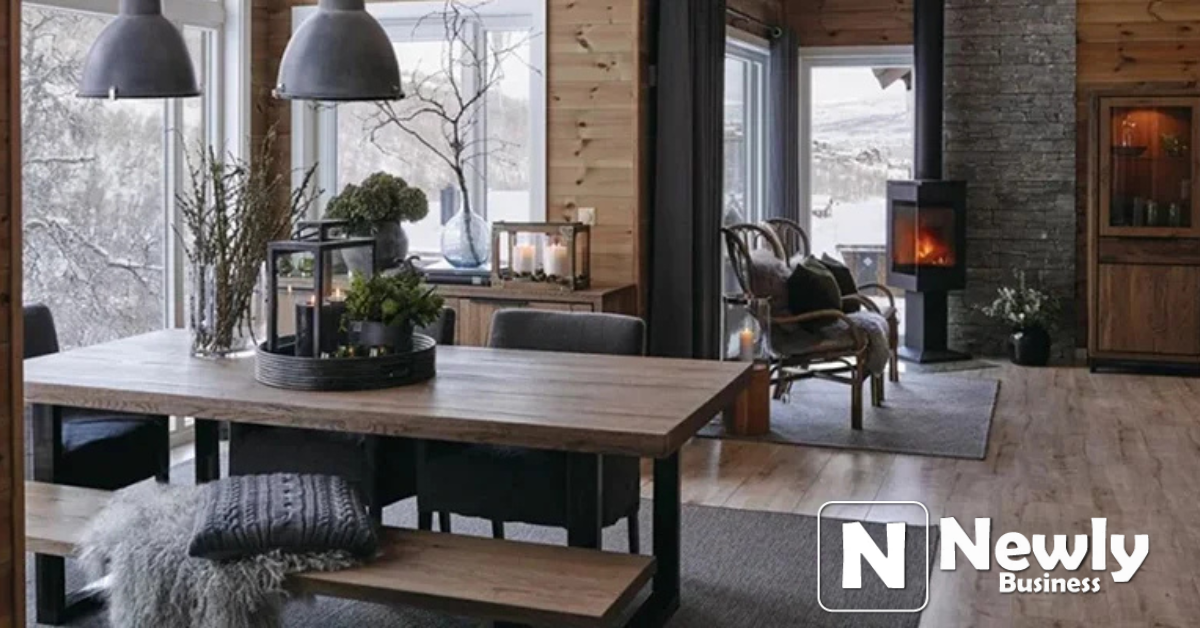There’s something special about small details that make a space feel complete, and that’s exactly where pyntekvister come into play. These decorative twigs or branches are a favorite in Scandinavian homes — adding a touch of nature, minimalism, and charm without overwhelming a room. Whether placed in a sleek ceramic vase or paired with dried flowers, pyntekvister bring a grounded, earthy vibe that speaks to the simplicity of Nordic living.
What’s even better? They’re budget-friendly, incredibly versatile, and can change the feel of a room with just a few thoughtful arrangements. If you’re looking to refresh your interior without committing to major changes, these subtle decor elements are a fantastic place to start. Whether you go for natural branches or painted ones, pyntekvister offer an effortless way to bring texture and warmth into your home.
Pyntekvister i hjemmet: En naturlig detalj med stor effekt
Bringing pyntekvister into your home isn’t just about decorating; it’s about inviting nature indoors in a way that feels fresh and intentional. Think about a bare corner in your living room or an empty space on your kitchen shelf — those are the perfect places for a minimalist touch that still feels meaningful. Pyntekvister serve as visual interest without needing much maintenance or investment. They’re especially useful if you like to switch up your decor seasonally but want to keep things consistent and calm.
If you’re someone who appreciates a clean, calm aesthetic, pyntekvister can be the small shift that makes everything else look more polished. These aren’t flashy statement pieces, and that’s their charm. A single tall branch in a narrow vase or a few thin twigs laid across a table setting adds a kind of artful imperfection that feels very hygge — warm, lived-in, and comforting. Best of all, they work with practically every interior style, from modern minimalist to rustic farmhouse.
Pyntekvister i interiørdesign – Fra natur til stil
Interior design trends come and go, but pyntekvister remain a timeless staple in Scandinavian homes because of their simplicity and authenticity. Whether you live in a city apartment or a countryside cottage, adding a touch of nature is always a good idea. Designers often use pyntekvister to create balance — something wild and organic next to something sleek and modern. It’s that contrast that makes a space feel intentional yet relaxed.
Even in more eclectic homes, pyntekvister add a level of grounding. You can create harmony by grouping them with other natural elements like linen, rattan, or handmade ceramics. They also serve as a sustainable decor choice. Instead of buying mass-produced items, you can source local branches from a walk in the woods or even your backyard. This connection to your environment adds a personal layer to your space, making pyntekvister not just beautiful but meaningful.
Creative Ways to Style Branches for Any Season
Styling pyntekvister isn’t limited to one particular look or time of year. They’re one of the most adaptable decorative elements you can use. In the spring, you might go for budding branches with soft green shoots or pair them with dried florals in pastel hues. Summer calls for lighter, airier arrangements with delicate eucalyptus or bleached twigs that catch the sunlight just right.
In autumn, pyntekvister really shine. Think warm, burnt tones and textures that reflect the season — mix in acorns, leaves, or even small hanging ornaments for a rustic vibe. Winter is perfect for the classic Scandinavian white-and-wood look. Paint your pyntekvister in matte white or gold, or decorate them with tiny fairy lights for a magical, festive feel. They can even double as a minimalist alternative to a Christmas tree in small spaces.
Where to Find and How to Choose the Right Decor Twigs
Finding the perfect pyntekvister doesn’t mean you need to shop at high-end stores. You can find beautiful branches at local florists, home decor shops, or even in your backyard. If you’re sourcing from nature, make sure the branches are dry and clean. Birch, willow, and eucalyptus are popular choices, but don’t be afraid to get creative — any interesting texture or curve can be used.
When selecting pyntekvister, think about your space. Do you want something tall and dramatic or small and subtle? Also consider the color — natural wood tones bring warmth, while painted or bleached options give a modern edge. It’s all about balance. Use them to complement what you already have, not to compete with it. For instance, a rustic branch in a sleek white vase can instantly elevate your entryway without trying too hard.
DIY Decor: Personalize Your Natural Touch
One of the most enjoyable aspects of working with pyntekvister is how easy they are to DIY. If you’re into crafts or want to add a personal touch to your home, decorating your own branches is both fun and satisfying. You can spray paint them, wrap them in twine, hang small ornaments, or even attach dried flowers to them. They’re like a blank canvas for your creativity.
DIY pyntekvister also make excellent gifts. A simple arrangement in a pretty vase can be a thoughtful housewarming present, especially if you personalize it with seasonal accents or the recipient’s favorite colors. It’s a low-cost, high-impact way to show someone you care — and let’s be honest, it’s way more interesting than a store-bought candle.
Pyntekvister as a Centerpiece: Dining, Living & Beyond

Decorating with pyntekvister isn’t limited to vases and corners. They make stunning centerpieces for dining tables, sideboards, and even coffee tables. By pairing them with candles, stones, or textiles, you create a multi-layered visual that feels intentional but relaxed. Try a flat arrangement of intertwined branches across your dining table with some tea lights nestled between — it’s rustic, romantic, and effortless.
In the living room, a tall vase with dramatic pyntekvister adds height and draws the eye upward, which can help make a smaller space feel bigger. On sideboards or shelves, you can use shorter, chunkier pieces to create visual texture without overwhelming the space. These small styling moves create harmony in your home, subtly tying the room together with a touch of nature.
Keeping It Fresh: Cleaning and Maintaining Natural Decor
One of the reasons people love pyntekvister is that they’re basically zero-maintenance. Still, if you want to keep them looking their best, there are a few simple tips to follow. First, avoid placing them in direct sunlight for long periods — this can fade painted or naturally colored branches. A quick dusting every couple of weeks with a microfiber cloth or feather duster will keep them clean and fresh.
If you’re using fresh or green branches, you’ll want to replace them every few weeks to prevent mold or decay. But if you stick with dried or preserved options, they can last for years. You can even apply a clear matte spray (like a floral preservative or hairspray) to keep delicate elements like buds or flowers intact. With just a little care, your pyntekvister will stay a beautiful part of your home decor all year round.
FAQs About Pyntekvister
What exactly are pyntekvister?
Pyntekvister are decorative branches or twigs often used in Scandinavian home decor. They can be natural, painted, dried, or styled in countless ways for a minimalist yet cozy effect.
Can I use real branches from outside?
Absolutely! Just make sure they’re clean and dry. Avoid anything too green or sap-heavy, as these can attract bugs or decay over time indoors.
How do I style pyntekvister for small spaces?
Use narrow, tall vases and go for vertical styling to save space. Even a single branch can have a big impact in a small room if styled thoughtfully.
Where can I buy pyntekvister?
You can find them at florists, home decor stores, or even online. Many people also collect their own from nature — just be mindful of environmental regulations when foraging.
Are pyntekvister suitable for all seasons?
Yes! They’re incredibly versatile and can be styled with seasonal accents like dried flowers, painted elements, or lights to suit any time of year.


